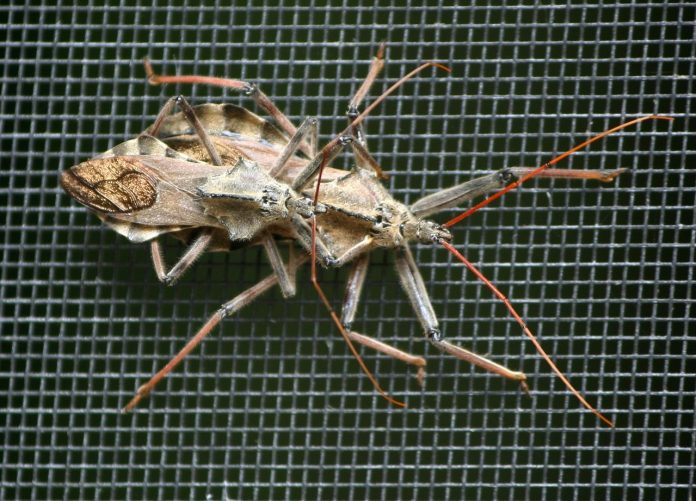Do you have pests in your garden? How do you protect your plants from these pests? Have you seen or heard of the assassin bug?
The assassin bug known as the wheel bug (Arilus cristatus) is one of the largest terrestrial true bugs in North America.
Wheel bugs are primarily in the eastern and central U.S. wheel bugs are true bugs classified in the Hemiptera, an order that includes such insects as the planthoppers, leafhoppers, stinkbugs, cicadas and water striders.
Description
Adult wheel bugs are gray and approximately 1 1/4 inches long. Its name comes from the distinctive, cog-like crest arising from the top of the thorax or middle section.
Wheel bugs have a bulbous compound eye and a simple eye just posterior to the other eye. The multiple eyes help capture its prey.
The two antennae on the head help it to test the air for smell. Wheel bugs will evert an odor produced by their orange-red sacs to warn off predators as a defense mechanism.
Hemipterans have two pairs of wings with the front half is leathery and the back half is shiny and membranous like a fly.
The hindwings are completely membranous. Most true bugs are capable flyers.
Wheel bugs move and fly slowly, and produces a loud buzzing sound while in flight.
Wheel bugs pair up in autumn, the female lays 40-200 tiny brownish bottle shaped eggs on a twig. The eggs hatch in the spring into a 1/8 long wingless red nymph.
The nymph undergoes five molts before complete metamorphoses.
Most hemipterans feed on plants by extracting the sap by its piercing mouthparts, or there are some that are predators that suck bodily fluids.
The wheel bug has one of the best developed mouthparts of any true bug. The wheel bug will lunge to capture its prey, then injects enzyme-laden saliva. This immobilizes the prey within 30 seconds and turns its parts into porridge.
Then the wheel bug sucks out all the victim’s bodily fluids. Gruesome.
This activity of killing the prey is why the wheel bug is classified in the Reduviidae, the Assassin Bug Family.
Don’t touch
You should not handle or handle with care when handling one.
My nephew one day picked up a nymph and asked me what is was, I told him but little did I know at the time that it would bite and be so intense. The poor boy went on for hours about the pain. So, the bite is intensely painful and should be washed and antiseptic applied to the area if this happens.
Treatment is not needed unless there is an allergic reaction. Healing could take a couple weeks to a month.
Predators
Both nymph and adult wheel bugs are predatory throughout their lives eating caterpillars, insects, and agricultural pests. For example, they eat milkweed bugs, adult and aphid that are seed and sap-suckers of the milkweed plant.
Wheel bugs are beneficial insects to have in your garden because they consume a variety of insects and will prevent use of pesticides in the garden.
“They’re the lion or the eagle of your food web,” Michael J. Raupp, an entomologist at the University of Maryland, notes. “They sit on top. When you have these big, ferocious predators in your landscape, that tells me that this is a very healthy landscape, because all these other levels in your food web are intact.”













